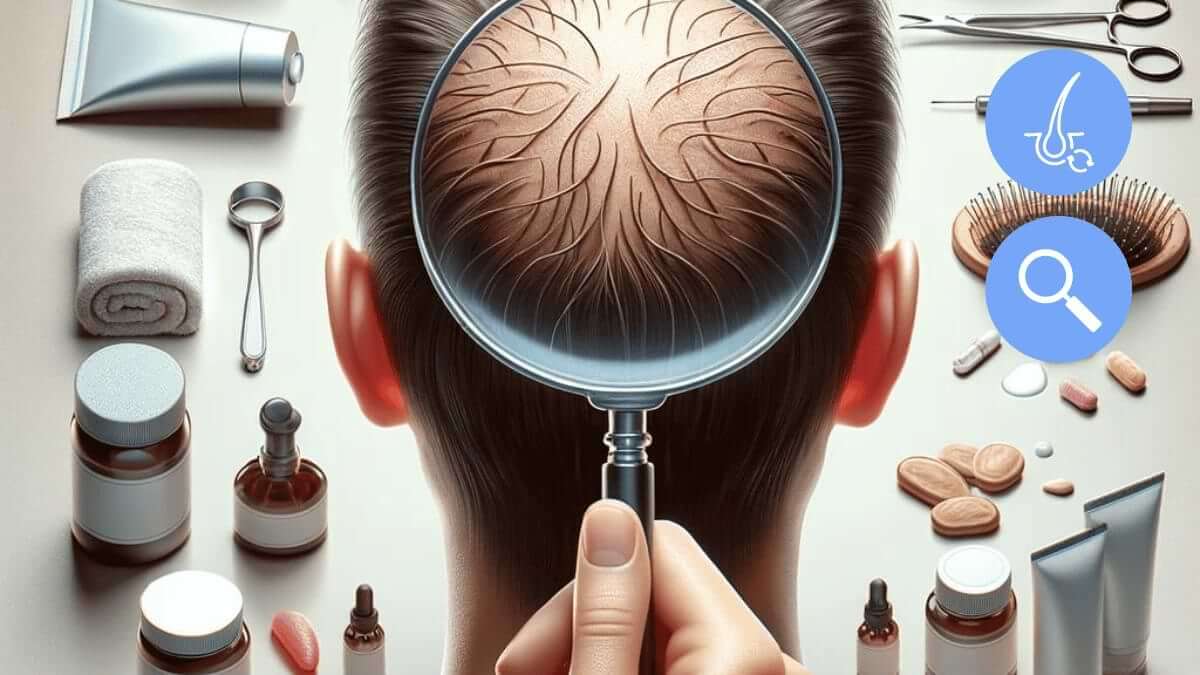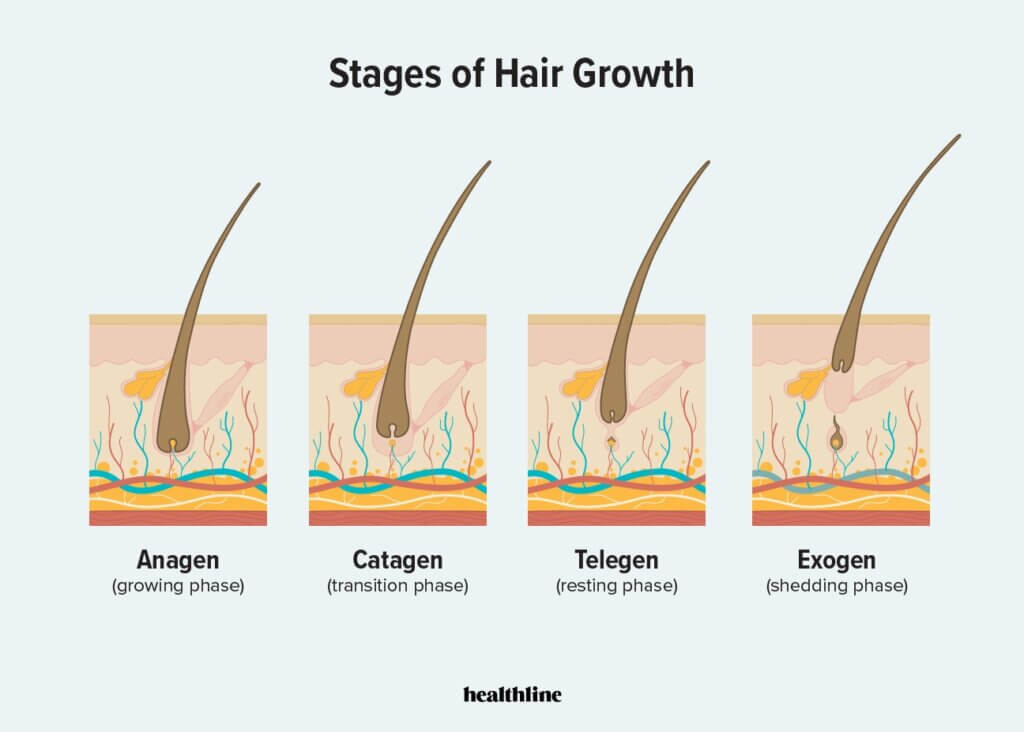TL;DR
▶ Since hair loss is natural, balding refers to excessive hair thinning or visible hairline losses on your scalp over time.
▶ Depending on factors such as your lifestyle, genetics, and medical background, your balding age can vary greatly. Most men who experience MPB see the start of their balding between the ages of 25 and 30.
▶ Usually, balding goes parallel with getting older. Naturally, if you’re experiencing a lot of hair loss recently or have significantly amplified, this might be a clear signal to visit a doctor as soon as possible.
According to the American Hair Loss Association, almost 66% of American men will experience hair loss by the age of 35 (corresponding to 110,000,000 men).
That’s 2 out of 3 people who will look at their photographs from their youth and go: “Wish I could have my natural hair back!”.
Before we move on, let me be honest with you on one thing: You can’t entirely stop hair loss. BUT you can do everything in your power to minimize it so your natural hair will stick around a lot more than it should.
As an experienced dermatologist doctor who has treated thousands of patients with hair loss, I can confidently say that in most cases, with early diagnosis and the right lifestyle choices or medical treatment, you can keep your hairline for a long time.
So, in this blog, I will help you get the first step right and self-diagnose your balding with the common signs you can easily spot:
Table of Contents
First, let’s quickly go over what “hair loss” actually means:
What Does “Going Bald” Actually Mean?
Going bald means either you are losing all the hair on your scalp or certain parts of it that bald spots are starting to become visible. The process emerges by either losing more hair than you can replace or not having enough hair growth to match the loss, which makes the hair loss permanent. ⚠️
There is an emphasis on “permanent” because losing individual hairs is a normal and common phenomenon for your body.
In fact, and I’m pretty sure you’ve already heard of this interesting fact, losing 50 to 100 hairs per day is perfectly normal and considered healthy since you replace the same amount of hairs every day.
Let me explain:
Throughout your life, each hair follicle on your scalp and body goes through 4 stages of growth:
1️⃣ Anagen (growth),
2️⃣ catagen (transition),
3️⃣ telogen (resting),
4️⃣ and exogen (shedding).
You’ve probably got what they are from the names, but let’s quickly go over what happens through each one of them and how long they last:
- Anagen: Anagen is the initial growth phase in a growth cycle and is the one that lasts significantly more than all the other phases combined. It lasts about 3-5 years for your scalp hair, and due to this long span, most of the hairs that are currently on your head (around 90%) are in this phase.
- Catagen: After the anagen phase is over, the Catagen phase, where the growth of the hair slowly comes to a halt and separates from the bottom end of the hair follicle. This lasts around just 10 days.
- Telogen: Telogen is the phase where the separated and stable (not growing anymore) hairs rest on your scalp, free from the hair follicles. Around 10-15% of your scalp hairs are in the resting phase at any given time, and this phase lasts for 3 months on average.
- Exogen: Exogen, the phase where the hair falls out, lasts around 2-5 months, which is why you lose 50-100 hairs per day. Right after this phase, new hair starts to form from the hair follicle, and the growth cycle resets to the anagen phase.
Since this growth cycle is, well, a cycle, you replace all the hair you’ve lost during the day as new ones come out from your hair follicles.
👉 So, hair loss happens when you can’t replace the number of hair strands you’ve lost, whether it is because your growth rate has slowed or your hair shedding rate has increased.
Both of these can happen due to different reasons, mainly nutritional deficiencies and medical conditions, which are worth mentioning to help you understand what you might be going through:
Different Types of Hair Loss
Hair loss causes can vary a lot from one patient to another.
Going over the most common types of hair loss will be helpful for self-diagnosing and understanding where you fall in the spectrum.
So, let’s start with the most common one:
Involutional Alopecia
Without exceptions, everyone naturally experiences involutional alopecia.
As you age, your body’s and hair follicles’ ability to grow new cells and hairs slowly weaken, ending up in thinner and shorter hair that has a relatively shorter hair growth cycle.
That doesn’t necessarily mean you will go bald because of involutional alopecia, but you will not have the same thick hair from your days of youth in your senior years, which is normal.
Androgenic Alopecia
Androgenic Alopecia is the most common type of hair loss that causes balding in adulthood. This hereditary condition affects around 50 million men and 30 million women just in the United States.
Most commonly referred to as Male Pattern Baldness or Female Pattern Baldness, this is the most common cause of hair loss in patients. It usually begins by thinning your hair first, which is caused by a hormone called DHT (dihydrotestosterone).
Medical treatments can’t directly treat androgenetic alopecia. However, its effects can be significantly reduced and reversed with hair loss treatments such as FUT or FUE hair transplant surgeries.
You can take a look at the Norwood scale, the leading classification system for male pattern baldness, below:
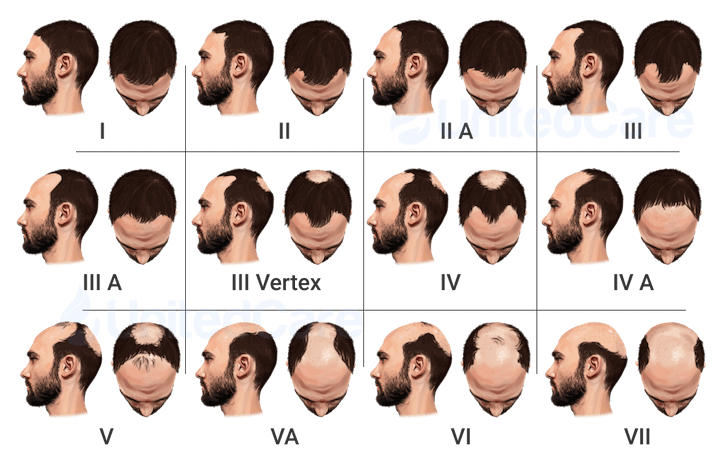
And for female patients with female pattern hair loss, the Ludwig scale can be used to determine the stage of female pattern baldness:
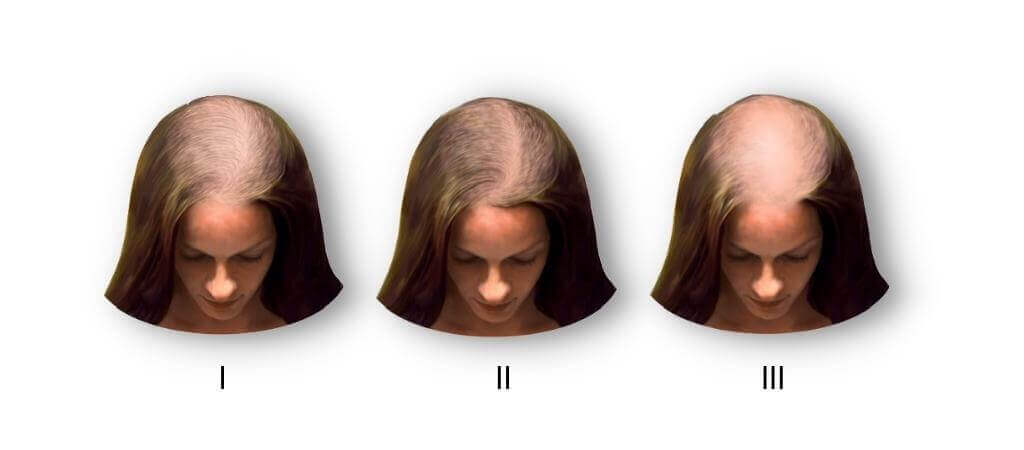
Alopecia Areata
Alopecia areata is an autoimmune disease that causes patchy hair loss as a result of your immune system attacking your cells.
In general, people with alopecia areata usually experience a sudden onset of patches of hair loss that last anywhere between weeks to months. You may see white dots on your skin that indicate the areas of hair loss, and they don’t always go away even if you stop losing hair.
💡 The good news is that the hair follicles will still have the ability to grow new hair, so with the proper treatment, the effects of this type of hair loss are reversible.
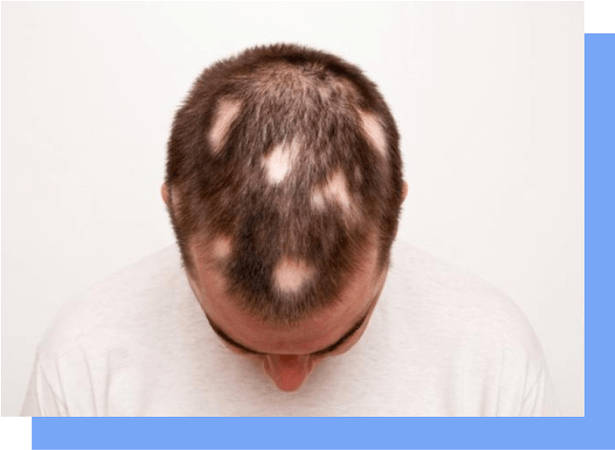
Telogen Effluvium
Telogen Effluvium is a temporary form of excessive hair loss that occurs when your hair cycles are forcefully pushed into the telogen phase after a stressful event.
*️⃣ The cause of this condition varies depending on the individual patient, but it can occur after any major stressor, such as chemotherapy, pregnancy, childbirth, illness, surgery, or hormonal changes.
You can lose up to 70% of your entire scalp hair in a matter of 2 months, which will dramatically affect your appearance. Fortunately, it’s usually NOT permanent as it is a temporary hair loss.
It typically lasts for two to three months before the hair starts growing back again. However, some cases of telogen effluvium can last longer than six months.
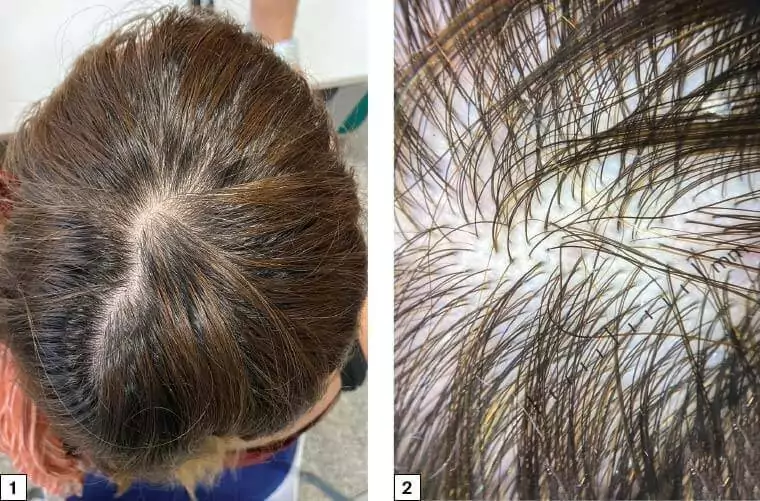
Anagen Effluvium
Anagen Effluvium is another temporary form of hair loss that is highly associated with any event or insult that harms the mitosis of hair follicles, the most common one being chemotherapy. Therefore, it is also commonly referred to as chemotherapy-induced alopecia.
The hair loss happens around 2 weeks after the event (e.g., chemotherapeutic therapy) and comes in the form of sudden hair loss on the hairs that are in the anagen phase.
Anagen effluvium, fortunately, is also reversible, and hair regrowth starts to happen when the harmful event or insult is no longer present.
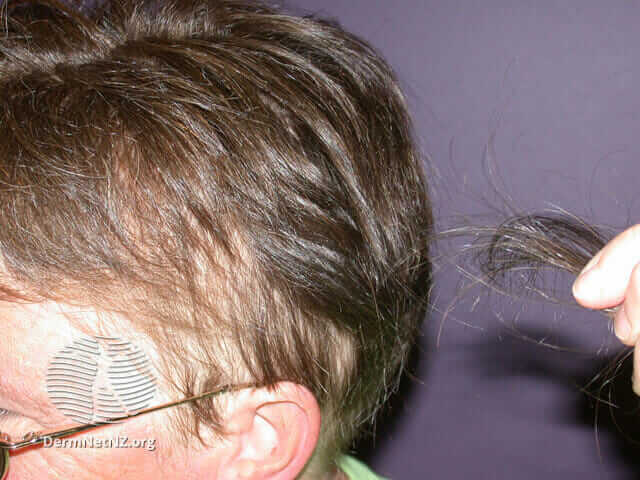
Lichen Planopilaris
Lichen Planopilaris, on the other hand, is a scarring hair loss (cicatricial alopecia) that commonly affects women. It permanently harms and destroys the hair follicle from the root and results in scars in the same area, enabling permanent patchy hair loss.
Lichen Planopilaris usually comes hand-in-hand with lichen planus, a severe infection that affects your skin, mouth, and nails.
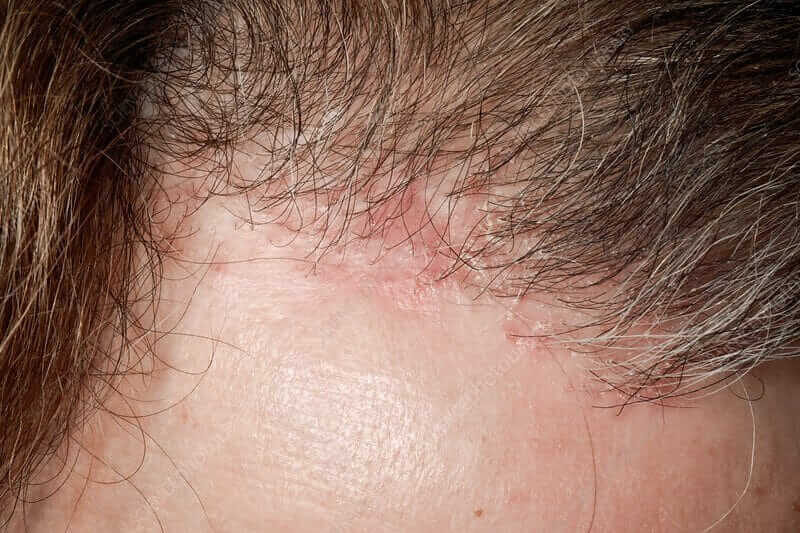
6 Common Signs of Going Bald
If you’re certain that you’re losing hair, the different types of hair loss I’ve provided in the previous chapter should help you identify what exactly you’re going through. ☝️
If you’re NOT certain, however, about whether or not you’re permanently losing hair, there are a few signs and indicators that can help you get a grip on what’s going on with your scalp:
1- Losing More Hair Than Usual
Yes, losing 50-100 individual hairs per day is completely healthy. I even go days without noticing any of the fallen hair, and that’s natural. 🍀
But if you have been noticing excessive shedding in your hair recently, especially when you’re combing (whether with a comb or your hand) or on the drain after you’ve showered, you might start to go bald.
If you’re not sure, you can just gently comb your hair when you have the chance or even check your pillow to see if there is an excess amount of fallen hair.
2- Receding Hairline
A receding hairline is one of the biggest indications of androgenetic alopecia, a.k.a pattern baldness. If you believe you recently started to have an uneven hairline, that might be a clue indicating further hair loss.
You can take a look at your old photographs and take a look in the mirror to see if your hairline has receded over time or just stayed the same.
3- Being Able to See Your Scalp / Thinning Hair in the Mirror
Most of us spend a considerable amount of time checking ourselves out in the mirror to see if everything about our face and hair looks okay. Your hair looking different and thinner or your scalp being visible in the mirror can be a few signs to tip you off.
A significant number of my patients have first discovered their balding look in the mirror, checking their hairline or their scalp and comparing different parts to measure density. The majority of those who followed this sign have guessed correctly.
But sometimes lighting conditions, our mood, or our hairstyle might make us see something that’s unusual. So try to change these variables and see if your hair still looks thinner.

4- You Notice Gradual Thinning Through Photographs
This one is going to set you up for a bit of nostalgia, but one thing you can just get up right now and do is check and compare an old photo of yours versus how you look in the mirror.
This is, in my opinion, an obvious sign and the safest way to tell if you’ve lost a significant amount of hair between two separate points in your life.
Again, as you age, you won’t have the same full head of hair as you did in your youth, but you need to be alert if there’s a rapid change in a short period.
5- People Telling You That You’re Losing Hair
Another common wake-up signal that alerts patients about hair loss is their close ones telling them that they’re balding.
Think about it.
Your barber, your roommate, your parents, your siblings, your coworkers, or your significant other spends much more time looking at your face and your hair than you do in the mirror or photographs. They’ll be more aware of any change in your body, including your hair balding.
If more than one person is telling you that you’re going bald, it might be time to see a dermatologist.
Speaking of dermatologists:
6- Your Dermatologist Giving You the Diagnosis
As dermatologists, we treat hundreds, maybe even thousands of patients every year. Believe me, I’ve seen a ton of people losing hair for a ton of different reasons that cause a ton of different hair types to lose hair.
So if there’s one person on earth who can tell you for sure if you’re going bald or not, right on the spot, it’s your dermatologist. And it’s the only way to make sure if, why, and how you’re losing hair.
That is why you should consult one right now if you want a straight answer:
Get a Proper Diagnosis Before It Is Too Late
If you have reasons to believe that you are losing hair, why spend any more time looking for answers online when you can get a FREE consultation from a dermatologist now?
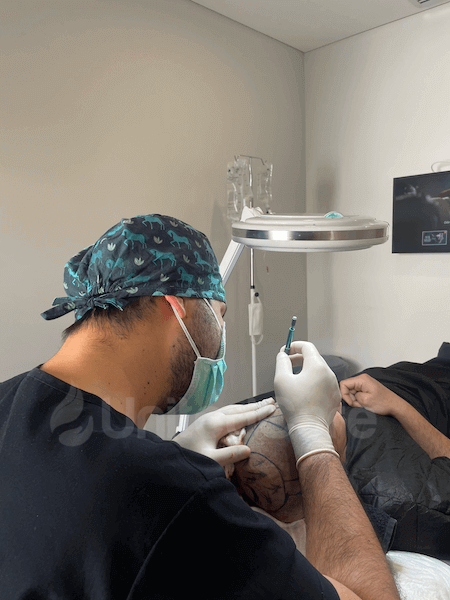
At UnitedCare, we begin your hair transplant process by offering you a FREE one-on-one consultation with our expert dermatosurgeons to decide your method together.
💊 Our holistic approach provides advanced technologies and bio-enhancements to ensure you do not need another surgery.
We use intracellular solutions (a.k.a bioenhancements), helping cells stay alive for days outside the body. These solutions increase graft survival rates significantly. 💉
Most importantly, our care assistant/patient manager is in contact with our patients even before and after the surgery, ensuring that your transplant becomes permanent. 🍀
Affordable hair transplant costs, a holistic approach, and experienced dermatologists on-site are here to provide you with the right solution.
Getting an expert’s opinion is the best way to know whether you are going bald.
UnitedCare and its expert dermatologist doctors can provide you with a one-on-one consultation:
Frequently Asked Questions (FAQs)
At what age will you know if you’re going bald?
While the exact age to determine if you’re experiencing some sort of hair loss can vary a lot based on your genetic condition, lifestyle, medical background, etc., most men who experience male pattern baldness see visible receding of their hairline and thinner hair between the ages of 25-30. It’s best to consult a dermatologist if you think you’re balding.
How do I know my baldness?
Balding, contrary to many medical conditions, develops visibly. You will not go bald in just one night, so, likely, you’ll either notice your hair thinning in the mirror or a photograph or discover strands of hair falling out of your scalp.
How do you know if you’re balding or maturing?
Balding and maturing, unfortunately, go together. Both androgenetic alopecia (male or female pattern hair loss) and involutional alopecia progress in proportion with age. However, if you’ve started to lose a lot of hair or your hair has gotten significantly thinner in a short time, it’s most likely a type of balding rather than maturing.
Am I bald or just paranoid?
Sometimes, lighting conditions, our mood, or our hairstyle can make us see something that’s unusual. That is why, to make sure, double-check by changing these variables. Your hair looking different and thinner or your scalp being visible in the mirror can be a few signs to tip you off. The majority of patients who follow the signs properly guess that they are experiencing hair loss correctly. Ultimately, however, the best way to make sure and clear any doubt is to consult a doctor immediately.
